| 08:30 |
|
Registration, Refreshments |
| 09:00 |
|
Welcome Speeches
(Prof. Dr. Alexander Roos, Director of HdM and Hideaki Asada Jr. President of Asada Mesh Co.)
|
| |
|
Session A Scientific Presentations |
| 09:30-10:00 |
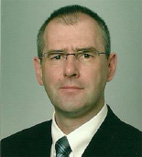 |
“The Fine line Screen Printing Stencil”
Dr. Wolfgang Seffrin – KIWO, GERMANY show/hide abstract and bio
Abstract: The presentation shows KIWO‘s Fine line screen printing system, which can be applied step by step. The system enables a high-end screen printing stencil which can be perfectly adjusted to the personal application. As first step emulsion with highest resolution has to be applied on the mesh as basis for the stencil. Therefore there are different photo emulsions: AZOCOL Z 170 FL, which is our standard fine line photo emulsion; AZOCOL Z 177 FL, which is the follow-up of AZOCOL Z 170 FL with higher chemical resistance or AZOCOL Z 173 FL-H, which can be hardened additionally with hardener and heat for highest chemical resistance.
Bio: Studies:
Oct. 1983 –Dec. 1988: Study of chemistry at University of Kaiserslautern, Germany;
degree in chemistry
July 1991: PhD examination; received doctorate in chemistry
Work experience:
Nov. 1991 –Dec. 1996: Astra Chemie Dr. Seidler GmbH, Rodalben, Germany
-Responsible for R&D and application
January 1997 –July 2003: Forbo Adhesives Deutschland GmbH, Pirmasens
-Developer for reactive hotmelts for various industrial segments
July 2003 –Dec 2012: Forbo Adhesives Deutschland GmbH, Pirmasens / HB Fuller
-R&D manager
Since January 2013: Kissel + Wolf GmbH
-Director Research and Development |
| 10:00-10:30 |
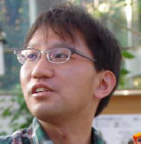 |
“Fine line screen printing technology for Photovoltaic (Paste and Screen collaboration)”
Ito Kazushige – HERAEUS, JAPAN
show/hide abstract and bio
Abstract: In Photovoltaic, screen printing technology is important and dramatically improved. In order to achieve high efficiency, fine line screen printing technology is important and narrower line width and thicker thickness is requirement from customer. In this presentation, we will share current Heraeus fine line technology and screen and paste collaboration.
Bio: Since 2016, Kazushige Ito joined Heraeus Japan and assigned Technical Service
Manager, Japan and Hybrid Screen Scientist. Now he is assigned screen project for fine line print.
Before joining Heraeus, from 2006-2016, he worked in DuPont Japan as R&D scientist and technical service engineer.
From 2006-2011, he assigned ‘the development photo sensitive paste for PDP (Plasma Display) and 2011-2016, assigned technical service and stencil paste development.
From 2002-2006, he worked in TDK as R&D scientist of MLCC. He was the project leader of new X8R MLCC development.
He graduated Tohoku University at 2002. His major is Chemical (especially single crystal). |
| 10:30 |
|
Coffee Break /Exhibitor Area
|
|
|
Session B Scientific Presentations |
| 11:30-12:00 |
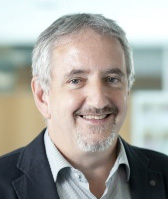 |
“RGB Screen Printing and Updates on HdM/IAD Projects”
Prof. Dr.-Ing. Gunter Hübner – MEDIA UNIV. STUTTGART, GERMANY show/hide abstract and bio
Abstract: On DRUPA 2016 new types of pigments were introduced by the Merck Company. These very bright pearl effect pigments called Spectraval enable a new color separation technique for printing. Instead of CMYK color separations, RGB separations can be used. Merck has shown various examples in offset printing but only a few in screen printing. Thus, in the technical lab at HdM in winter semester 2016/2017 with the support of Merck we tried to print a nice sample in the RGB separation technique. In the second half of the presentation I will give some updates on the currently running projects in my research group. For our rechargeable zinc/air batteries we made some progress on the gas-diffusion electrode and in another project we work on haptic feedback of a combined sensor/actor interface.
Bio: Since 1999 Prof. Huebner teaches at the University of Applied Science, Stuttgart Media
University “Hochschule der Medien” (HdM) in Stuttgart, Germany.
From 2004 until 2014 he was the leader of the HdM study program “Print and Media Technology”. Besides the entire printing technologies and printing processes his specialties in teaching are digital, screen and functional printing.
In 2006 the Institute for Applied Research (Institut für angewandte Forschung –IAF) was founded at the HdM. He took over the leadership of the IAF, which is an umbrella organization over meanwhile, about 30 research groups within the HdM.
His own research group is called “Institute for Innovative Applications of the Printing Technologies” (IAD) and mainly deals with functional and specialty printing. Recent successful developments are printed antennae for automotive applications, screen-printing of rechargeable batteries and resistive or capacitive sensors.
Before joining the HdM he worked for about 11 years with the companies AGFA Gevaert AG and DuPont de Nemours as a research and process engineer. |
| 12:00-12:30 |
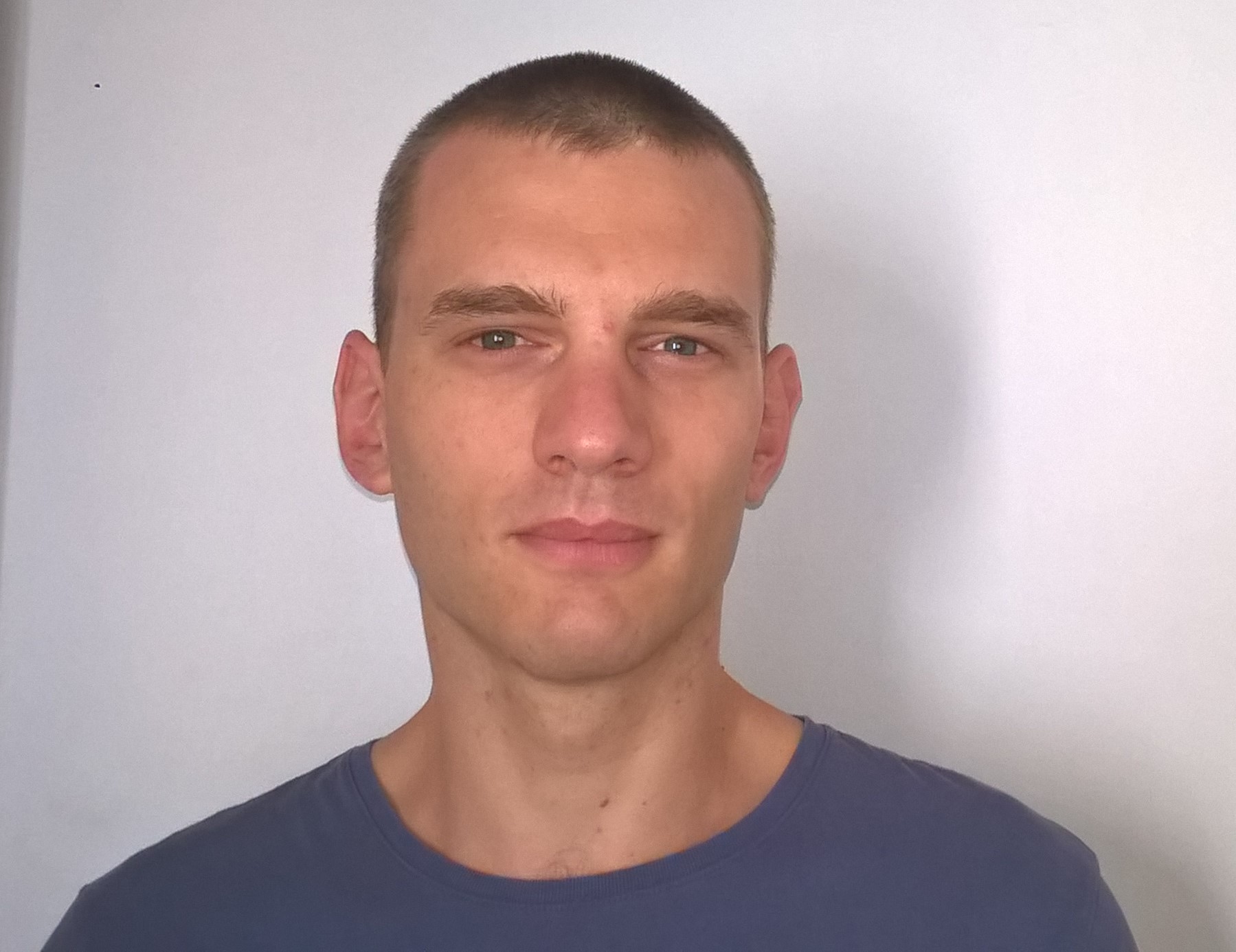 |
“Transparent conductive paste for PV application”
Dr. Guillaume Krosnicki – POLYINK, FRANCE show/hide abstract and bio
Abstract: Silicon heterojunction (HJT) is the technology showing the record efficiency for silicon-based solar cells. State of the art screen-printed HJT cells use silver paste deposited on transparent conductive oxide layer as front contact grid. The silver lines or fingers shadow up to 5% of the incoming light. By using transparent conductive paste, the cell efficiency can be improved. This work reports the use of transparent conductive paste screen-printed on HJT solar cells.
Bio: Dr. Guillaume Krosnicki (M) is in charge of R&D and production of Poly-Ink.
He is a specialist of nanoparticles for electrochemistry and printed electronics.
He has an Engineer´s Degree in Electrochemistry from INPG-PHELMA (France) and his PhD, focuses on Fuel Cells, at Strasbourg University (France). He is author or co-author of patents and publications about Renewable Energies and Printed Electronics.
|
| 12:30-13:00 |
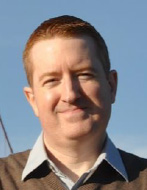 |
"Towards Graphene-based Printed Electronics"
J. Patrick Frantz – HAYDALE TECHNOLOGIES, THAILAND show/hide abstract and bio
Abstract: Tremendous industry interest in novel carbon materials has developed over the past 25 years, first with the discovery of carbon nanotubes (CNTs) in the early nineties and then again with the isolation and characterization of graphene that led to a Nobel Prize in Physics in 2010. However, industry players both small and large are still struggling with the challenge of putting these materials into real products. One promising application area is the use of graphene-based inks/pastes in printed electronics to replace the use of expensive silver inks for general purpose conductivity and indium tin oxide coatings as transparent conductors. This talk will outline the recent progress made by Haydale’s group of companies in the field of graphene-based printed electronics, which will include examples of products in the R&D stage as well as products currently in mass production.
Bio: J. Patrick Frantz received BA (1995) and MEE (1997) degrees from Rice University and returned to Rice in 1999 to serve as the Executive & Technical Director for the Center for Multimedia Communications.
In 2006 he was awarded the Outstanding Young Engineering Alumnus award for his efforts in international engineering education. Shortly thereafter, Patrick moved to Japan, working in the semiconductor and display industries (Xilinx, Barco and UniPixel Displays) and receiving an MBA from Temple University Japan in 2011.
He founded planarTECH in 2012 and has since been active in the field of graphene and other emerging 2D materials, including serving as Haydale Limited’s Asia Representative since May 2014. |
| 13:15 |
|
Luncheon |
| 14:15 |
|
Bus transfer to industrial visit. Press manufacturer EKRA/ASYS Bönnigheim, Germany |
| 16:30 |
|
Bus transfer back to HdM |
| 18:30 |
|
Optional evening event: visit of exhibition "Motorworld" in Böblingen and dinner (on own expenses) in "Tower66" |
Tuesday September 26th |
| 08:30 |
|
Registration, Refreshments
|
| |
|
Session C Scientific Presentations |
| 09:00-09:30 |
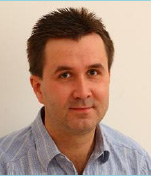 |
“Fine line printing for WORM and RRAM memory structures“
Dr. Tomas Syrovy – UNIV. OF PARDUBICE, CZECH REPUBLIC show/hide abstract and bio
Abstract: The talk will be about non-rewritable and writable memories, printed by screen printing – some experiments were performed at OIH
Bio: Since 2006, Dr. Syrový has been a Senior Researcher at the Department of Graphic Arts and Photo physics at the University of Pardubice, Czech Republic.
From 2009 is leader of a research group working on material Printing/Coating Technologies.
Since 2010, he has been the Deputy Manager of the Department of Graphics Arts and Photo physics. His research is focused on of various topics of printed/coated electronics (Sensors, RFID, Displays –(ECD, LEC), Accumulators, Smart labels, etc.), functional layers/structures (antistatic, antibacterial, luminescent, photochromic, etc.).
The core of his activities in projects is the development of ink formulations, and the technology of preparing functional layers/structures, including upscaling and transfer to industry.
|
| 09:30-10:00 |
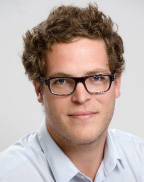 |
“New inks from Genes’Ink are pushing the limits of screen printing further”
Gregoire Staelens – GENE´S INK, FRANCE show/hide abstract and bio
Abstract: Gregoire is working as a scientist in the R&D department of Genes’Ink. The company is offering innovative solution for Printed electronic market, including OPV, OLED displays and IoT (sensors, RFID).
Bio: Gregoire is working as a Scientist in the R&D department of Genes' Ink.
The company is offering innovative solution for Printed electronic market, including OPV, OLED displays and IoT (sensors, RFID).
4years at Genes’ Ink working in ink formulation, printing process development (Screen printing, Ink Jet and Flexo, Spray) and curing process.
One of his key achievement is the development of the first curing free silver nano ink for screen printing. |
| 10:00-10:30 |
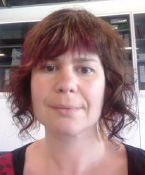 |
“Next Generation Carbon inks for printed biosensors”
Dr. Rakel Herrero – MATEPRINCS, SPAIN show/hide abstract and bio
Abstract: Carbon materials have been widely used in both analytical and industrial electrochemistry, due their low cost, wide potential window, relatively inert electrochemistry and electrocatalytic activity for a variety of redox reactions. These kinds of electrodes are particularly useful for monitoring of oxidations and reductions of organic and biological molecules being even better to those of noble metals1. For this reasons this kind of SPE based on Carbone or Carbone/graphite electrodes has aroused a big interest in the industry. Mateprincs has developed a graphite/carbon ink with a superior performance and low curing temperature, useful for a wide spectrum of chemical targets.
Bio: Dr. Rakel Herrero received her M.Sc. in Polymer Chemistry from the University of the Basque Country (UPV-EHU) in 1999.
In 1998 she joined The Manchester Metropolitan University for an Erasmus year working on a project about physical-chemical interactions of transparent toothpaste components.
In 2002 she obtained her PhD at The Manchester Metropolitan University researching about mechanism and inhibition of pinking in PVC profiles and worked as a part time teacher and consultancy for different companies in TiO2 characteristics.
She joined CEMITEC in 2003 working in polymer materials and biodiesel R&D projects and industrial services in the Materials Area. She has being working in functional printing since 2006, first in functional inkjet printing and since 2011 in the Materials Deposition Area of CEMITEC using other printing techniques such as roll to roll flexo printing, gravure coating, rotary and flat screen printing and sheet to sheet offset printing. Her job is mainly focused on printed electronics. Lately she has been working on bio-active materials impression, textile printing and on the start-up of the new functional inks company MATEPRINCS. |
| 10:30 |
|
Coffee Break /Exhibitor Area
|
| |
|
Session D Scientific Presentations |
| 11:30-12:00 |
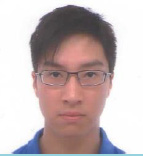 |
“Importance on Ink Rheology for High Resolution Screen Printing”
John Lau – SWANSEA UNIVERSITY, UK show/hide abstract and bio
Abstract: Printed electronic devices such as electroluminescent displays, organic light emitting diodes, and photovoltaic devices, all require transparent, electronically conductive materials for their electrodes. In situations where flexible devices are desired, transparent electrodes produced from Indium doped Tin Oxide (ITO) coated polymer films have been a popular choice. Due to material scarcity, cost and the desire for greater device performance, alternatives to ITO could prove beneficial. One viable approach is to produce an electrode by combining highly transparent substrates with a fine printed grid of opaque, highly conductive metallic ink. This provides a great opportunity to fine tune the optical and electronic performance of the resulting electrode for specific applications. The target for this project; printing a network of sub 30 micron, highly conductive fine tracks onto flexible substrates of over a meter squared in size could is technologically challenging process. In this study the printability of ultra-fine features through very high thread count mesh will be equated with the rheological properties of the ink. This work will bring together ASADA’s expertise of high resolution mesh screens combined with the advanced rheological characterization expertise of the Welsh Centre for Printing and Coating.
Bio:
Yin Cheung Lau (John) received the MEng degree in Chemical Engineering from Swansea University in 2013.
He as previously interned with Bayer MaterialScience and Haemair Ltd.
John is currently pursuing the EngD degree in Materials Engineering at Swansea University and his current research interest is the fabrication of conductive patterns on flexible substrates. |
| 12:00-12:30 |
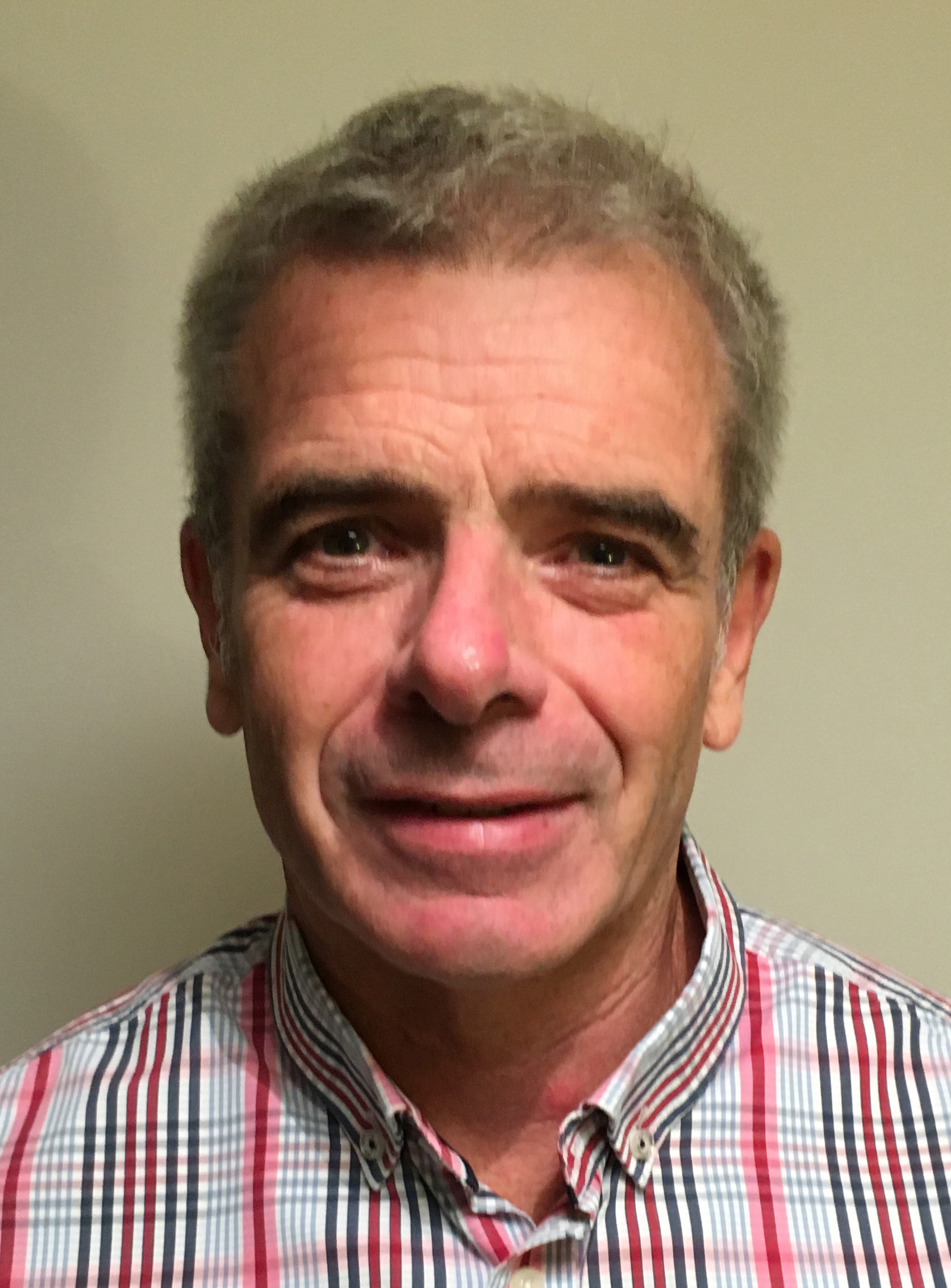 |
“Trampoline Panel Technology, the latest news and materials”
Richard Stewart – ASM, UK show/hide abstract and bio
Abstract: Advantages of Trampoline Panels for Fine Line Meshes. TPs are now available in the UK and Europe thanks to the collaboration between the companies ASM and Asada Mesh. ASM will present the most common sizes and packaging. A cost comparison between conventional Screen Manufacturing and TPTs will be explained.
Bio: Richard (Rich) Stewart was born in Dundee, Scotland but grew up and was schooled in the London area. After attending university in London he started his career as a buyer with a construction company in the mid 1980’s.
Following a number of years in purchasing and supply chain roles in the construction and engineering industries he joined ASM (then DEK Printing Machines) in 1999. After a number of roles in purchasing and commercial roles he moved to DEK’s Engineered Products (EP) business in 2009 as Operations Manager for the Screens business in Weymouth, UK.
Since 2009 his role has grown to incorporate Management of the Stencils and Tooling businesses with sites across Europe, Asia and the USA. He is still involved in the Screens business on a daily basis. Rich firmly believes that emerging technologies mean Screen Printing is key to the core ASM vision of “enabling the digital world”. |
| 12:30-13:00 |
|
Wrap up by Fernando Zicarelli Asada |
| 13:15 |
|
Luncheon |
| 14:00 |
|
Visit of HdM facilities |
| 15:00 |
|
End of 2nd day and symposium |









